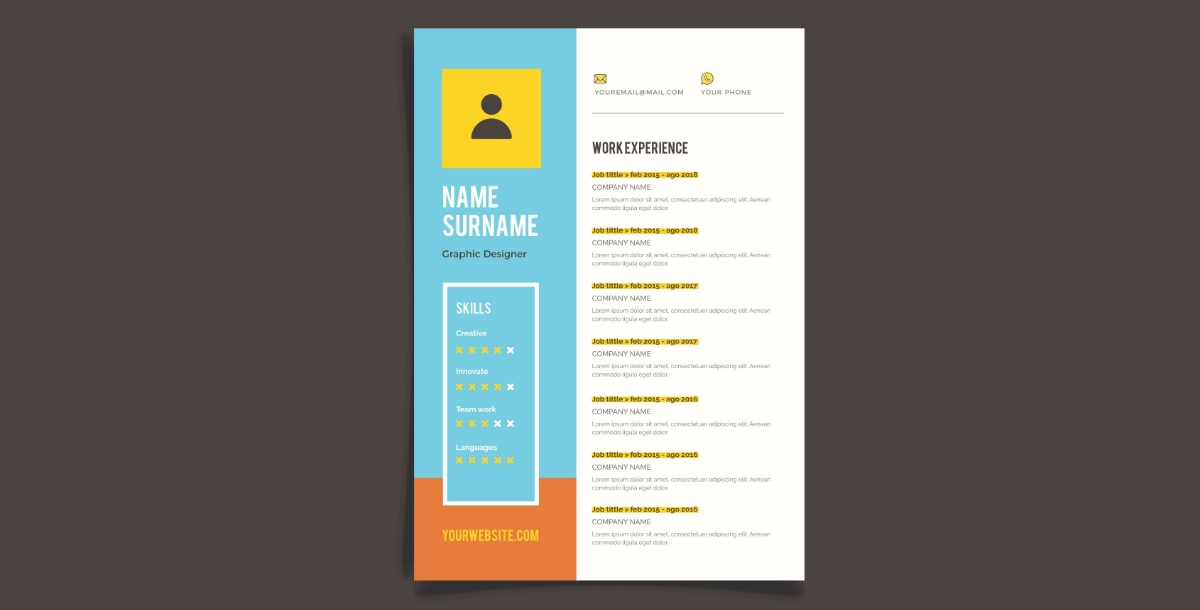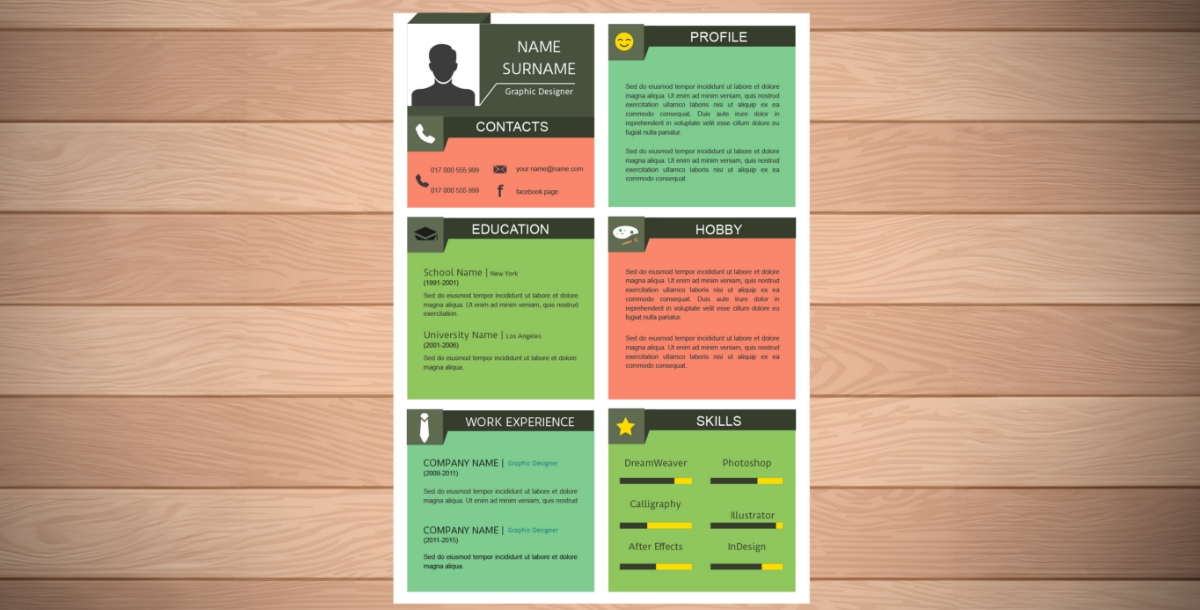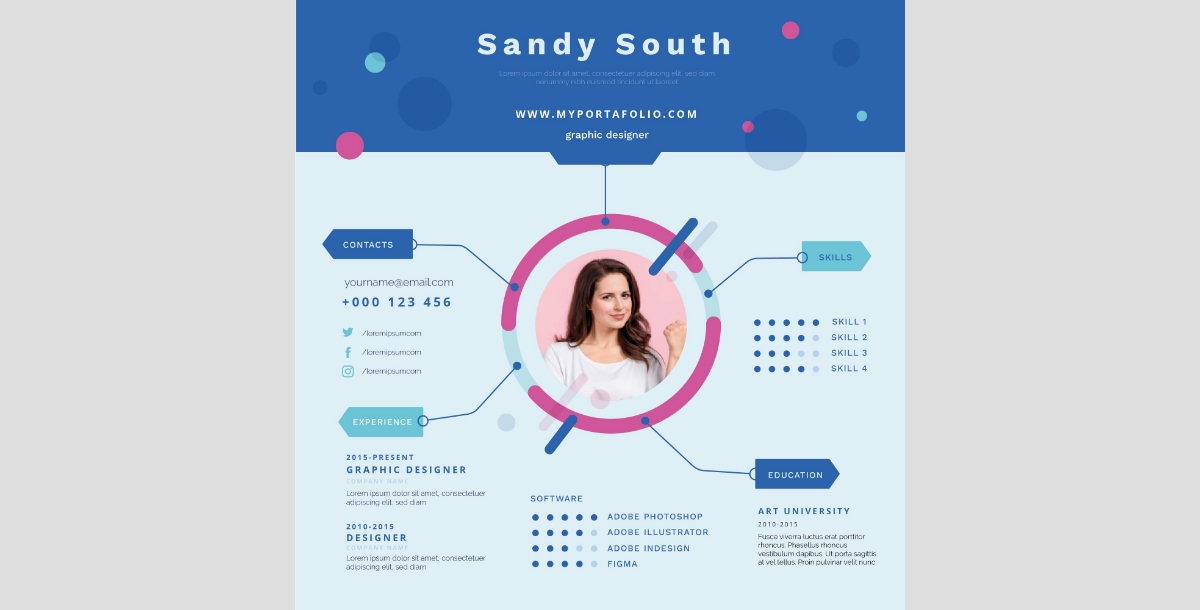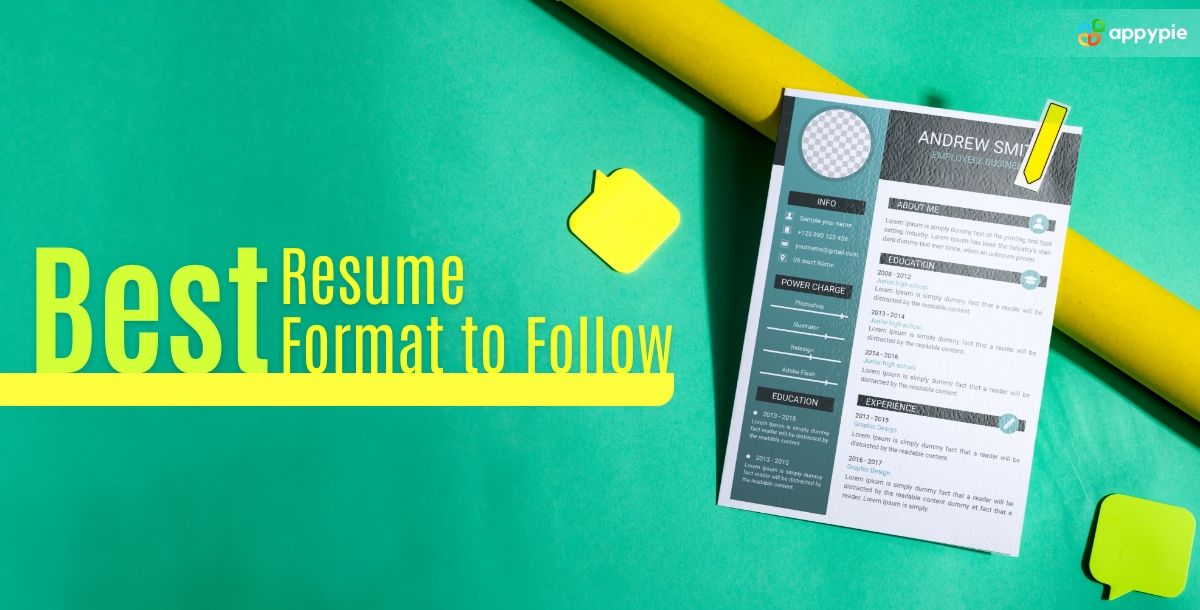Your resume represents the first line of communication between you and a potential employer, so knowing inside out resume formatting is essential when seeking employment. It is not just a summary of your work history but a critical tool that highlights your qualifications. Effective resume templates and strategic formatting decisions can significantly impact how your application is perceived, underscoring the importance of how to write a resume and choose the right format to showcase your skills and experiences.
This blog will explore the various aspects of creating a compelling resume and you can use AI Design tools to streamline the process. By focusing on the latest trends and techniques in resume formatting, you will gain insights into creating resumes that not only stand out to employers but ensure your applications should make a lasting impression.
Table of Content
- The Importance of a Well-formatted Resume
- Exploring Best Resume Formats for 2024
- How to Write your Resume: A Step-by-Step Guide
- Formatting Tips for Clarity and Professionalism
- What Should be included in your Resume
- Add a Cover Letter to your Resume
- How to convert Prompt to Resume with Appy Pie?
- Conclusion
The Importance of a Well-formatted Resume
The importance of a well-formatted resume cannot be overstated, as it serves as the first impression a potential employer will have of a candidate. Here are several key reasons why a carefully created resume is a must:
First Impressions Matter
A resume that is both visually appealing and well-organized allows recruiters to quickly evaluate a candidate's qualifications and potential fit for the position. In order to do so, the design and format of a resume should balance creativity with professionalism, effectively enhancing the readability and highlighting the candidate's strengths.
Highlighting Qualifications and Skills
Customizing a resume to highlight skills and experiences relevant to the job shows that the candidate has taken the time to align their qualifications with the job requirements. Including specific metrics, such as revenue generated or efficiency improvements, provides clear evidence of a candidate's capabilities and accomplishments.
Streamlining the Recruitment Process
A well formatted resume allows hiring managers to quickly scan and decide which candidates should proceed to the next stage of the hiring process. Also, employers often compare resumes side-by-side to determine which candidates best meet the job criteria, making a clear and concise resume a vital tool in competitive job markets.
Exploring Best Resume Formats for 2024
As the job market evolves, so too should the tools we use to navigate it. For 2024, several resume formats are shaping up to be particularly effective, each tailored to different career stages and industry expectations. Here's a breakdown of the most promising resume formats for the upcoming year.
- Reverse-Chronological Format
- Recommended for: Most job seekers.
- Features: Focuses on work history, listing jobs from most to least recent.
- Benefits: Familiar to recruiters, easy to follow career progression.
- Functional Resume Format
- Recommended for: Individuals with gaps in employment or changing careers.
- Features: Focuses on skills and abilities over chronological work history.
- Drawbacks: Less preferred by hiring managers, as it can unclear career trajectory.
- Combination Resume Format
- Recommended for: Experienced professionals with specialized skills.
- Features: Balances detailed skills sections with a chronological work history.
- Consideration: Ideal for those with a strong skill set developed over a long career, often extends to two pages to cover extensive experience and skills.
- Targeted Resume Format
- Recommended for: Job seekers applying to specific roles, focusing alignment with job requirements.
- Features: Tailors every section to match the job and company, highlighting relevant skills and experiences.
- Benefits: Increases the chance of standing out by showing a precise fit for the position, exhibiting effort and interest.




For those entering or reentering the job market, such as college students or recent graduates, the College Student Format is ideal. This format prioritizes educational achievements and relevant coursework over professional experience, which is often limited at this stage in a career.
In terms of design and customization:
- Modern Format: Utilizes bold colors and creative design elements, making it perfect for roles in casual or creative industries.
- Simple Resume Format: A traditional approach that focuses on a clean layout, highlighting work history and professional achievements.
Technical Considerations:
- Font and Size: Always choose professional fonts and appropriate sizes to ensure readability.
- Consistency: Maintain uniform formatting throughout the document to present a cohesive and professional appearance.
- ATS Compatibility: Ensure the resume is compatible with Applicant Tracking Systems by using a layout that is easy to scan and avoiding elements that could confuse these systems.
By selecting the right format and customizing it to reflect personal style and the expectations of potential employers, job seekers can significantly enhance their visibility and appeal in a competitive job market.
How to Write your Resume: A Step-by-Step Guide
Creating a standout resume involves careful attention to detail and a strategic approach to presentation. Here’s how to write your resume effectively, ensuring it not only looks professional but also captures the essence of your qualifications and experiences:
Step 1: Choose the Right Resume Format
Decide whether a reverse-chronological, functional, or combination format suits your career needs. For recent graduates, a college student format focusing on education and coursework is advisable.
Step 2: Add Contact Information
Ensure your name, phone number, email, and LinkedIn profile (if applicable) are prominently displayed at the top.
Step 3: Write a Resume Headline
Create a concise headline that summarizes your professional identity and goals. This should grab attention and make a strong first impression.
Step 4: Prioritize Work Experience
List your previous jobs in reverse chronological order, starting with the most recent. Use bullet points to describe your responsibilities and achievements, including action verbs and quantifiable results.
Step 5: List Your Education
Include degrees obtained, institutions attended, and graduation dates. Highlight relevant courses, honors, or extracurricular activities if they enhance your job application.
Step 6: Spotlight Your Skills
Tailor this section to the job by including skills that match the job description. Use a mix of hard and soft skills relevant to the position.
Step 7: Leverage Optional Resume Sections
Consider adding sections for certifications, publications, or volunteer work if they strengthen your candidacy.
Step 8: Save and Send Appropriately
Save your resume in a compatible format like PDF to preserve the layout. Follow application instructions regarding file types and naming conventions. If your resume isn't in PDF format, easily convert it using an Appy Pie’s PDF converter to ensure compatibility and professionalism.
Step 9: Consider Using Resume Maker Tools
Utilize online tools such as a resume maker for a polished look, especially if the design isn't strong enough. These tools often suggest phrasing and ensure ATS compatibility.
Step 10: Review and Edit
Proofread for spelling and grammatical errors. Ask a trusted friend or mentor to review it as well to catch any mistakes and provide feedback.
Also Read: Learn How to Make Resume for First Job to kickstart your career.
Formatting Tips for Clarity and Professionalism
Below is a list of a few guidelines that need to be followed in order to create a resume that not only looks appealing but also provides a clear, concise, and relevant overview of your professional journey.
- Font and Size: Stick to professional fonts like Arial or Helvetica, and keep the font size between 10-14 points to balance readability and space. Also, you may use an AI Font Generator to create professional fonts for your resume, enhancing its readability and visual appeal.
- White Space: Understand white space usage and use adequate margins (about 1 inch) to prevent the document from appearing cluttered.
- Consistency: Ensure that all headings are the same size and style, and align all text for a tidy appearance.
- Bullet Points: Use bullet points for listing achievements and responsibilities to make the content easier to scan.
- Action Verbs: Begin bullet points with dynamic action verbs to convey your contributions effectively.
What Should be included in your Resume
When creating your resume, it's essential to include specific elements that not only pass the Applicant Tracking System (ATS) scans but also catch the eye of human recruiters. Here’s a breakdown of what to include in your resume to make it standout:
- Header Section: Essential Contact Information
- Full Name, Professional Email, and Phone Number: Always start with your name prominently at the top, followed by your contact details. If applicable, include a professional LinkedIn profile or personal website link.
- Location: Mentioning your city and zip code can be crucial, especially if the job is location-specific.
- Professional Summary or Objective
- Summary: A brief statement summarizing your professional background, key skills, and career goals. This section is tailored according to your experience level and the job you're applying for.
- Objective: For those newer to the job market or changing careers, an objective clearly stating your career goals and what you aim to achieve in the position can be beneficial.
- Employment History
- List in Reverse Chronological Order: Start with your most recent job. Include the company name, your job title, and the dates of your employment.
- Responsibilities and Achievements: Use bullet points to detail your job duties and highlight achievements with quantifiable results.
- Educational Background
- Degrees and Certifications: List your highest degree first, followed by others in reverse chronological order. Mention any relevant certifications that enhance your job qualifications.
- Relevant Coursework and Projects: Especially for recent graduates or those from a relevant academic field, listing significant projects or coursework can add value.
- Skills Section
- Hard Skills: Specific to the job like software proficiency, languages, or technical skills.
- Soft Skills: Interpersonal skills like communication, teamwork, and problem-solving abilities.
- Tailor Your Skills: Align this section with the job description to include keywords and skills that are a match for the job.
- Additional Sections to Consider
- Certifications and Licenses: Any additional qualifications that give you an edge.
- Awards and Honors: Recognitions that can substantiate your accomplishments.
- Professional Affiliations: Relevant memberships that show your ongoing engagement in your profession.
- Volunteer Work: Exhibits your initiative and commitment, which are qualities valued by employers.
- Languages and Technical Proficiencies
- Languages: State your proficiency level; this is particularly important for roles requiring communication in multiple languages.
- Technical Skills: List software tools, programming languages, and systems you are proficient in, as these are often crucial for passing ATS scans.
- References
It's generally recommended to state "References available upon request" unless the job listing specifically asks to include them in your resume.
Also Read: What Does Resume Look Like and explore some of the perfect Resume examples
Add a Cover Letter to your Resume
Adding a cover letter to your resume can significantly enhance your job application by providing a personalized introduction and detailed insights into your professional background. Here are key points to consider when crafting your cover letter:
Essential Elements of a Cover Letter
- Header: Include your full name, phone number, and professional email. Add the date, the hiring manager's name and title, and the company's name.
- Salutation: Address the cover letter directly to the hiring manager.
- Opening Paragraph: Capture attention with 2-3 top achievements to stand out immediately.
- Body Paragraphs: Detail why you are the perfect candidate, aligning your skills and experiences with the job description. Flaunt your knowledge about the company to show genuine interest.
- Closing Paragraph: Summarize your qualifications, thank the hiring manager for their time, and include a call to action, such as requesting an interview.
- Formal Closing: Use a professional closing statement like "Sincerely" or "Best regards".
Formatting Your Cover Letter
- Length: Keep it concise.
- Font and Alignment: Use a simple, professional font and maintain left alignment throughout the document.
- Visual Appeal: Consider well-formatted cover letter templates to make a good visual impression but ensure it doesn’t overshadow the content.
Strategic Tips for a Compelling Cover Letter
- Tailor Your Content: Customize each cover letter for the specific job and company, reflecting your enthusiasm for the position.
- Highlight Key Skills: Focus on skills and experiences that directly relate to the job. Use measurable impacts to show success.
- Avoid Common Errors: Avoid clearly mentioning your full address or using an unprofessional email.
- Proofread: Always check for grammatical errors and typos to maintain professionalism.
Including these elements into your cover letter can make a strong first impression on potential employers and increase your chances of being noticed in a competitive job market. A cover letter complements your resume by adding a personal touch and providing additional context—it is not a replacement but a vital supplement to your application. In order to create a cover letter in just a few steps, you can also try Appy Pie’s Cover Letter Maker.
How to convert Prompt to Resume with Appy Pie?
Creating your own AI-generated Resume has never been easier with Appy Pie Design. In just simple steps, you can design stunning resumes using the power of AI.
- Open Appy Pie Design and Navigate to the AI Resume Maker
- Generate Resume from prompts using AI technology
- Personalize Your Resume Design
- Save and Share Your Prompt-based Resume
Start by opening the Appy Pie Design on your device. Once you’re in, locate the Resume section either by using the search function or by browsing through the categories. Click on it to begin your Resume creation process.
In the Resume section, begin by inputting your prompt or idea, and let the AI generate a variety of Resume templates tailored to your concept. Or you’ll find a variety of Pre AI-generated Resume templates. You can either select one of these templates or opt to create your own from scratch.
Review the Resume designs, customize them as needed by adjusting text, fonts, colors, and images, and finalize your Resume design. Replace the default text with your own message. You can also add images or other design elements to make your Resume truly unique.
Once you’re satisfied with your Resume design, preview it to ensure everything looks perfect. Take a moment to review the text, layout, and overall composition. Make any necessary adjustments to ensure a visually appealing result. After previewing, it’s time to download and share your AI-generated Resumes. Appy Pie Design allows you to download your Resume in various formats, including JPEG and PNG.
Conclusion
In this blog, we've explored the complexities of resume formatting, the importance of tailoring your resume to the job market of 2024, and the significant role a cover letter plays in complementing your application. The strategies and tips provided aim to furnish job seekers with the knowledge to create resumes that not only pass the inspection of Applicant Tracking Systems but also capture the attention of human recruiters. By focusing on the trending formats of a well-organized resume, the importance of selecting the right format and right resume sizes and the need to highlight the achievements, this blog laid out a path for creating resumes that stand out in a competitive job landscape.
Related Articles
- Which Type of Charts for Infographics is Preferable When Dealing with a Timeframe?
- Mailchimp vs. Sendinblue: Which is Better to Use in 2024?
- Fisheye Photos: How To Add a Fisheye Effect
- Adobe Sign vs. DocuSign: What’s the Best eSignature Solution in 2023?
- ShipHike – A Mobile App that Lets Your Packages Hitch-Hike. Is This the Beginning of the End for Personal Delivery Giants?
- DiffUHaul: A Training-Free Method for Object Dragging in Images
- Automation, Liquidation and Reverse Logistics
- Introduction & Overview of the concept of AI Text to Voiceover Generation
- Customer Support vs. Customer Service: A Comparison
- Top Discord Integrations: A Complete Guide









